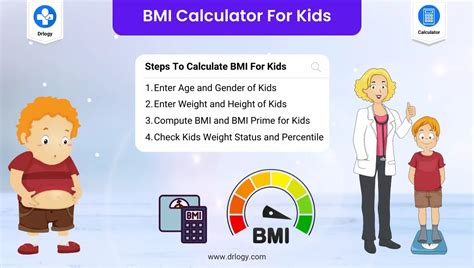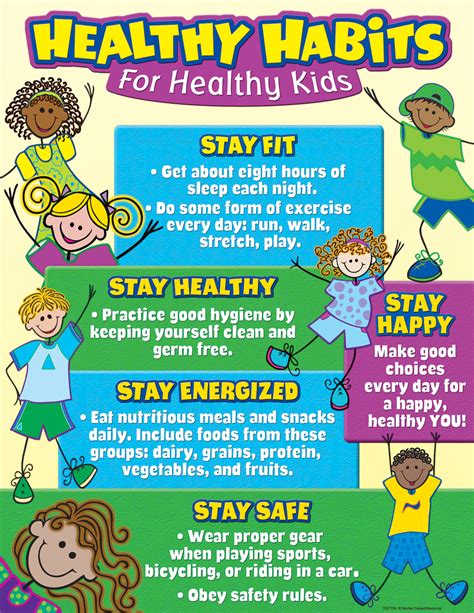Intro
Calculating and understanding Body Mass Index (BMI) for kids is a crucial aspect of assessing their health and wellbeing. BMI is a simple index of weight-for-height that is commonly used to classify underweight, normal weight, overweight, and obesity in adults. However, when it comes to children and teenagers, BMI is calculated and interpreted differently due to their growth patterns and varying body compositions at different ages. The importance of monitoring BMI in kids lies in its ability to provide an early indication of potential health risks associated with excess weight, such as diabetes, heart disease, and social or psychological problems.
Monitoring a child's BMI can be a sensitive topic, but it's essential for parents, caregivers, and healthcare providers to approach this subject with care and understanding. By tracking changes in BMI over time, it's possible to identify trends that may suggest a child is at risk of becoming overweight or obese. Early intervention can significantly impact a child's long-term health, making it crucial to address any issues promptly. Moreover, focusing on healthy habits such as a balanced diet and regular physical activity can help children maintain a healthy weight and reduce the risk of obesity-related health problems.
Understanding how BMI works for kids involves recognizing that their bodies are constantly changing as they grow. Unlike adults, children's BMI is calculated using the same formula (weight in kilograms divided by the square of height in meters), but it is then compared to a growth chart specific to their age and sex. These charts, often provided by health organizations like the World Health Organization (WHO) or the Centers for Disease Control and Prevention (CDC), help in determining whether a child's weight status is within a healthy range for their age. This method acknowledges that what might be a healthy weight for a 5-year-old would be very different for a teenager, due to natural growth and development patterns.
Calculating BMI for Kids

Calculating BMI for kids involves a straightforward process, but interpreting the results requires understanding the specific growth charts. Here are the general steps:
- Measure the child's weight in kilograms.
- Measure the child's height in meters.
- Calculate the BMI using the formula: BMI = weight (in kg) / height (in meters)².
- Plot the BMI on the appropriate growth chart for the child's age and sex to determine their weight status.
Understanding Growth Charts
Growth charts are essential tools for assessing the growth and development of children. They provide a graphical representation of a child's growth over time, allowing healthcare providers to track changes and identify any deviations from the expected growth pattern. For BMI, these charts are specifically designed to account for the age and sex of the child, recognizing that growth rates and body composition vary significantly at different stages of development.Interpreting BMI Results for Kids

Interpreting BMI results for kids involves comparing their calculated BMI to the percentile on the growth chart that corresponds to their age and sex. The percentile rank shows the relative position of the child's BMI among children of the same sex and age. Here's how the results are typically categorized:
- Underweight: BMI-for-age below the 5th percentile.
- Healthy weight: BMI-for-age between the 5th and less than the 85th percentile.
- Overweight: BMI-for-age at or above the 85th percentile but less than the 95th percentile.
- Obese: BMI-for-age at or above the 95th percentile.
Addressing Weight Issues in Children
If a child is found to be overweight or obese, it's crucial for parents and healthcare providers to approach the situation with sensitivity and a focus on health, rather than appearance. Encouraging healthy lifestyle habits without emphasizing weight loss directly can help children develop positive relationships with food and physical activity. Strategies might include: - Promoting a balanced diet that is rich in fruits, vegetables, whole grains, and lean proteins. - Encouraging regular physical activity, such as sports, dancing, or simply playing outdoors. - Limiting screen time and sedentary behaviors. - Modeling healthy behaviors as parents or caregivers, since children often mimic what they see.The Importance of Healthy Habits for Kids

Establishing healthy habits from a young age is vital for long-term health and wellbeing. Children who develop good eating habits and enjoy physical activity are more likely to maintain these behaviors into adulthood, reducing their risk of chronic diseases. Moreover, focusing on overall health rather than weight can help children develop a positive body image and reduce the risk of eating disorders or other mental health issues.
Supporting Children's Health
Supporting children's health involves a multifaceted approach that includes education, environmental changes, and community involvement. Schools can play a significant role by incorporating health education into their curriculum and promoting physical activity through sports and play. Communities can support this by providing safe spaces for children to play and organizing activities that encourage physical activity and social interaction.Overcoming Challenges in Promoting Healthy Habits

Despite the importance of healthy habits, many families face challenges in promoting them. These can include lack of access to healthy food options, safe spaces for physical activity, or time constraints due to busy schedules. Addressing these challenges requires a supportive environment that includes policy changes, community programs, and educational initiatives. For example, schools can implement policies to increase physical education time, and communities can advocate for the development of parks and playgrounds.
Role of Parents and Caregivers
Parents and caregivers have a pivotal role in promoting healthy habits among children. By being role models, providing a supportive environment, and encouraging participation in physical activities, they can significantly influence a child's lifestyle choices. Additionally, involving children in meal planning and preparation can help them develop an appreciation for healthy foods and cooking skills.Conclusion and Future Directions

In conclusion, monitoring and maintaining a healthy BMI in children is a critical aspect of ensuring their overall health and wellbeing. By understanding how BMI is calculated and interpreted for kids, and by promoting healthy lifestyle habits, parents, caregivers, and healthcare providers can work together to reduce the risk of obesity and related health issues. Future directions should include continued education, community support, and policy changes that foster an environment conducive to healthy living.
Final Thoughts
As we look to the future, it's essential to prioritize children's health through a comprehensive approach that includes education, support, and environmental changes. By doing so, we can empower the next generation with the knowledge and habits necessary to lead healthy, fulfilling lives.What is the significance of calculating BMI for kids?
+Calculating BMI for kids is significant because it helps in assessing their health and wellbeing by providing an early indication of potential health risks associated with excess weight.
How is BMI calculated for children?
+BMI for children is calculated using the same formula as for adults (weight in kg / height in meters²), but the result is then plotted on a growth chart specific to their age and sex to determine their weight status.
What are the categories of weight status for kids based on BMI?
+The categories include underweight (BMI-for-age below the 5th percentile), healthy weight (between the 5th and less than the 85th percentile), overweight (at or above the 85th percentile but less than the 95th percentile), and obese (at or above the 95th percentile).
We invite you to share your thoughts and experiences on promoting healthy habits among children. Your insights can help create a supportive community that prioritizes the wellbeing of the next generation. Feel free to comment below or share this article with others who might find it helpful. Together, we can make a difference in the lives of children worldwide.
